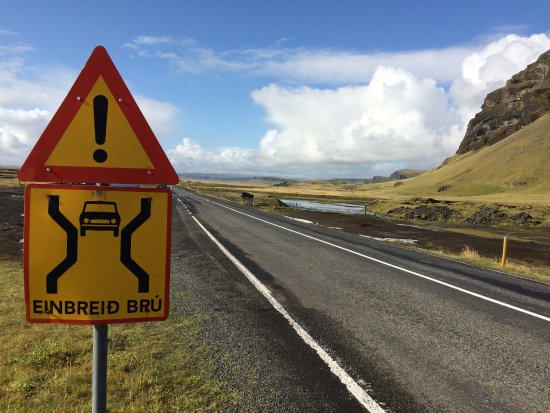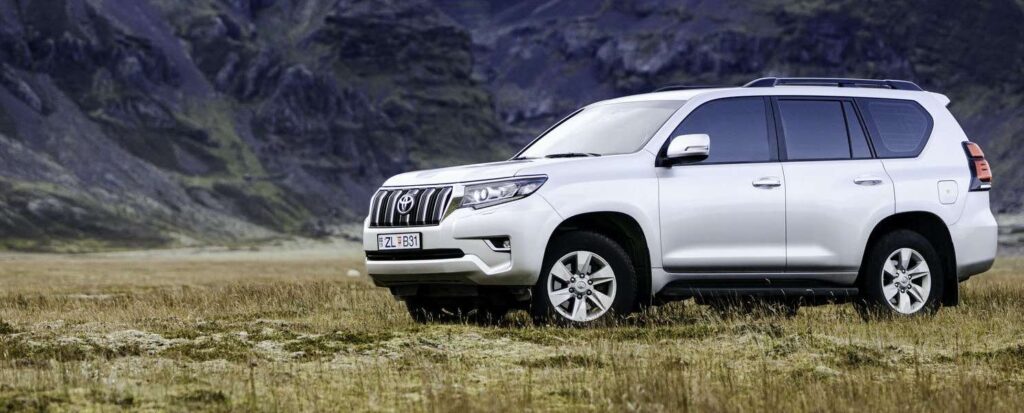Driving in Iceland has its own specifics and in this article we will focus on the key things you should think about when traveling around Iceland by car.
Safety rules while driving in Iceland
Door in the wind
The most common damage to cars among Icelanders is when a strong wind blows up a car door. To prevent this, you must:
- Before opening the door, open the window and check the wind direction and strength
- Park the car with the front facing the windAlways hold the door firmly when it is open
Snow and ice

Driving in snow or ice can be difficult, and in spring and autumn, a thin layer of ice on the road is often almost invisible. Drive slowly, do not make any quick turns and apply the brakes carefully.
Roads can be icy in some places and always require the full attention of the driver. Pay attention to the outside temperature and always drive slowly, as it will help you stay in control of the car.
Sandstorm
Please keep in mind that windy and dry conditions increase the possibility of damage to the car. Some areas of Iceland have a lot of loose sand or ash that easily drifts in the wind. Do not drive in such areas when it is windy. However, if you choose, you can minimize the risk of damage by slow driving.
Encounter with an approaching car on a narrow road
Mountain roads are often very narrow, which makes it difficult to meet oncoming cars. Be especially careful when encountering oncoming cars, as there are often large rocks on the side of the road that can easily damage your car.
Lights
In Iceland, the vehicle’s lights are required to be on while driving, day and night.
Blind hills
There are a lot of hulls on our roads, some without markings on al. However, many of them are marked with the warning label “Additional danger” of the word “Blindhaed”. As you approach the blind hill, stay on the right side of the road and slow down because you could meet the car without seeing it coming.
Off road, driving off the road

We care very deeply about our beautiful landscape, so please pay the utmost respect to the Icelandic environment. It is strictly forbidden to ride in the field. The result of such a ride is serious damage to sensitive vegetation, which can take decades to prepare nature.
Rivers without bridges
Be careful when crossing mountain rivers can be dangerous. Shift to the lowest gear and drive slowly to prevent water damage to the water.
Fast drive
Roads in Iceland are not made for fast driving.
The maximum permitted speed on Icelandic roads is 90 km / h in the best of circumstances. The police are very active in calculating the speed of drivers and you should know that the speed tickets are very high.
Gravel roads
Driving on a gravel road can be similar to driving on an icy road. Remember that the maximum speed on gravel roads is 80 km / h in the best of circumstances. When passing another car, slow down and drive to the side of the road. Take a special car, the edges of these roads are slippery due to loose gravel.
One lane bridges in Iceland

Many bridges in Iceland have only one lane, so only one car can cross at a time. As you approach these bridges, pay special attention to oncoming traffic.
Highlands
The Icelandic mountain roads Kjalvegur and Kaldudalur, together with all road markets such as road F, are not suitable for passenger cars. Only 4 × 4 jeeps are allowed on these roads and very high fines can be expected.
Animals
Sheep, horses and other animals move freely in many areas of Iceland. Drive carefully where the animals are near the road, as they could easily run in front of your car.
Roundabouts
In Iceland, the inner circle usually has all the priorities. If you do not leave the roundabout on the first exit, stay in the inner (left) lane.
Sudden weather changes
The weather in Iceland can quickly change from good to very bad. Always check the road conditions and weather forecast you see on the road.is and safetravel.is websites
Distance between cars
You can avoid many accidents by leaving enough space behind another vehicle on the road.
Stopping on the road
If you want to stop the car on the road so you can take a photo or admire the scenery – always make sure you stop in a safe place. Never stop the car in the middle of the road.
Frequently asked questions about driving in Iceland
What side of the car is the steering wheel in Iceland?
Driving in Iceland is similar as in other european countries and USA, that means, the steering wheel is on left side of the vehicle.
Is it difficult to drive in Iceland?
Iceland is big country, but small nation, so there is not so much traffic except in Reykjavik. That could mean, driving in Iceland will be very easy, but it has the tricky sides as well.
The most problem is quality of the road in abandoned areas and the huge impact of your driving experience will have weather.
We can say, that driving in Iceland in summer is not difficult, except in highland and F-roads (crossing rivers for example).
But the conditions get worse from October til May, when there can be strong winds, snow and ice on the roads. In these situation is necessary to drive carefuly and know, what weather to expect in next hours/days.
What is the maximum speed limit in Iceland?
The maximum speed limit is 90 km/h. There are no roads on Iceland, where you can drive faster than 90 km/h. In the cities, there is usual limit of 50 km/h, in parts of Reykjavik, you can find limits of 80 km/h in less populated areas.
On the gravel roads, you can drive 80 km/h, which is also the safest speed to keep driving safe.
Nevertheless, it´s always the best to adapt your speed to outside conditions and sometimes rather speed more under the limit, to safely arrived to your destination.
How much is a speeding fine in Iceland?
Speeding fines in Iceland are very expensive and getting higher and higher every year.
You get fines between 500-1000 USD/EUR for speeding 20 – 30 km/h over the limit.
There could be cases, where police will not stop you for speeding around 10 km/h, but even this speeding could be charged.
What happens if you speed in Iceland?

There are 3 ways, how can you be charged for speeding in Iceland. The first is, that policemen will stop you in the car and charge you at place.
Police cars are usually staying along the main road and measuring for speeding, so that´s the most suprising and also most common way how to get charged.
Radars and cameras
The other possibilities are speeding cameras. There are two types of these radars. The first and most common type measure your speed, when you passing them.
The new, less common type of radars used to check the speed of cars are cameras having two units. One unit is at start of the measured area, the other one on the end. The cameras measure, if you didn´t have average speed in this are too high, according to speed limit and driven distance.
But there is one good thing about speeding cameras in Iceland. There is always road sign with the symbol of speeding camera, so you will know soon enough before the camera appears, that you should slow down.
Can you drink and drive in Iceland?
No, never. You can never drink and drive in Iceland, so wait with your beer after you stop driving.
Can you drive in Iceland with UK license?
Yes, driving in Iceland is possible for international visitors. You can drive with your drive license from UK without problems.
Can US citizens drive in Iceland?
The same applies for drivers from USA. Driving with american driver license is allowed in Iceland, so you don´t have to be afraid to rent a car and start your journey.
What to read now? Our visitors were interested in this:











